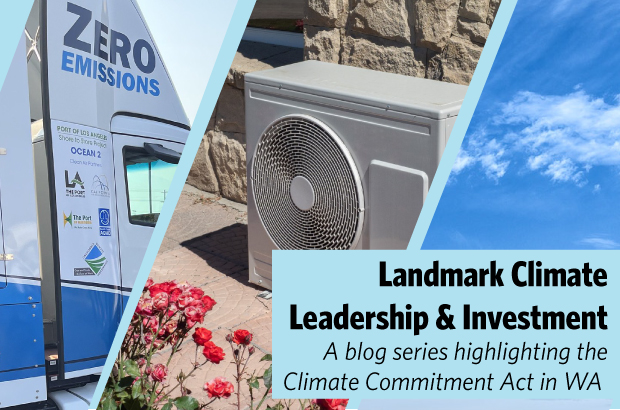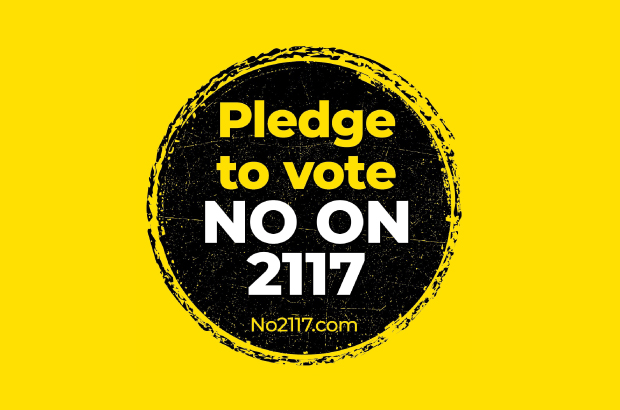This week was big: on Tuesday, February 28th, the Department of Ecology launched its first auction where Washington State’s biggest polluters under the Climate Commitment Act (CCA) were required to pay for their pollution through purchasing allowances (where one allowance equals one metric ton of carbon). Alongside this milestone, we’ve seen a significant uptick in media coverage (Washington Post, CNBC, Axios, NPR, Seattle Times, and others) on the CCA auction, emphasizing that all eyes are on Washington and our landmark law. We will know the results of the auction next week, but all insights confirm that these CCA auctions will result in billions of dollars to invest in clean energy, clean air, and clean communities in Washington.
In our last two blogs covering the CCA, we talked about the ins and outs of the auction process and looked at the key environmental justice pieces of the bill, which are fundamental to the successful implementation of the law. In our last of the series, we’ll dig into the “invest” side of the cap-and-invest equation, central to which are requirements to invest at least 35% of funds to directly benefit communities overburdened by climate and air pollution, and at least 10% of funds to directly benefit tribes.
A vision for investing billions
Washington’s legislature is actively deciding how the first round of CCA revenue will be spent. CCA funds must support meaningful climate action and community resilience to climate change through projects that cut climate pollution quickly, make clean energy solutions accessible and affordable, and improve air quality—especially in low-income communities and communities of color. The law creates three separate “accounts” that CCA revenue must flow through, which you can dig into here and see summarized below.
The CCA provides a monumental opportunity to invest in climate and clean energy solutions that improve air quality and benefit overburdened communities. Three ways Climate Solutions is encouraging the Legislature to fund equitable clean energy solutions are:
1. Increasing access and affordability of cleaner homes and buildings.
Emissions from buildings have grown at a faster rate than any other source of greenhouse gas emissions in Washington due to the increased reliance on fossil gas in homes and buildings. And beyond climate pollution, burning gas indoors creates toxic air pollution indoors that harms public health – children growing up in a household with gas stoves are 42% more likely to develop asthma symptoms.
Washington must significantly reduce pollution from homes and buildings and the state needs to invest substantially to make sure it doesn’t leave low- and middle-income residents and small businesses behind. Low- and middle-income households (LMI) are the least likely to be able to afford clean energy retrofits without incentives and funding, and are most vulnerable to the compounding impacts of air pollution, so these incentive programs are critical to ensure equitable access.
We encourage the legislature to build out an LMI home and building retrofit program that provides upfront cost-assistance and covers 100% of the cost of upgrades to ensure overburdened communities have access to clean homes and buildings. You can read more about our clean buildings priorities here and here.
2. Cleaning up our dirtiest roadways.
While greenhouse gas emissions from passenger vehicles have remained steady, climate pollution from medium- and heavy-duty (MHD) vehicles - such as trucks, vans, and buses - has more than doubled since 1990. Diesel exhaust is also responsible for 70% of the cancer risk from air pollution in Washington and communities who live near roadways and ports are particularly harmed, and with clear health disparities by race and income factors.
Zero-emission MHD vehicles will present significant fuel savings and lower maintenance costs over time, but the vehicles are currently more expensive to purchase than diesel vehicles. Small business and independent drivers are often unable to afford upgrades, and many of these drivers live in communities that suffer from environmental injustice and air pollution, perpetuating a vicious cycle.
The Legislature should create a voucher program – similar to California’s HVIP program spotlighted in last week’s blog – that helps drivers, schools, companies, and more pay the upfront costs needed to purchase a zero-emission truck. This funding package should also include funding for charging infrastructure, which is critical for large-scale conversion, and for innovative demonstration projects to develop the market for early-stage applications of this zero-emission technology. You can read more about our efforts to clean up our medium- and heavy-duty transportation sector here.
3. Improving air quality in overburdened communities.
Many of the nation’s most polluting industries are located within low-income, Black, and/or Indigenous communities as well as other communities of color due to racist housing practices such as redlining, so investments in climate solutions must be paired with air quality improvements in these historically overburdened neighborhoods. As we covered in last week’s blog, the CCA statute includes a requirement to expand air quality monitoring networks in the state and reduce localized air pollution from the state’s top sources of pollution. These requirements are a strong starting point and would be strengthened by community-led solutions to air pollution.
The legislature should dedicate additional funding for community-led air quality and health disparities improvement through grant programs that could support a broad set of programs, including improving air filtration in old infrastructure, appliance upgrades in and weatherization of homes, and more.
These three priorities offer a small window into the promise of CCA investments. Some additional investment priorities worth highlighting include a new Tribal clean energy grant program, as well as a slew of natural climate solutions priorities to strengthen one of our greatest tools for climate adaptation – our environment. You can read more about our and our partners’ full spectrum of budget priorities in this one-pager put together by the Environmental Priorities Coalition. And as CCA implementation continues to unfold, we encourage you to reach out with any questions and check back on our website for updates






